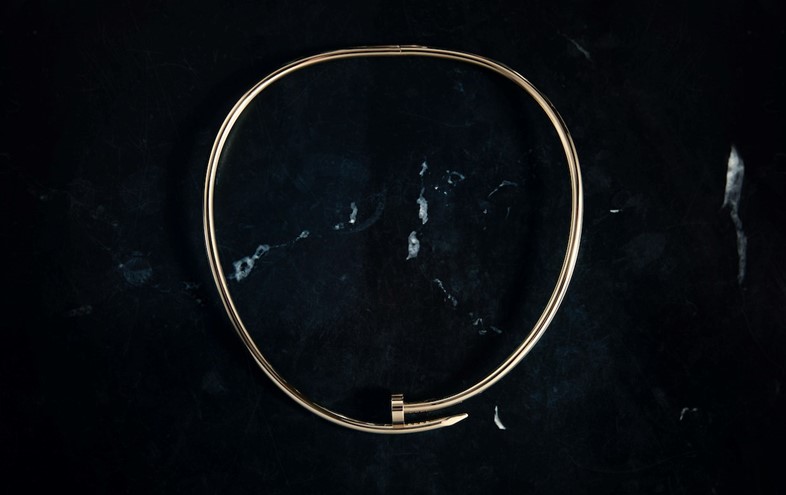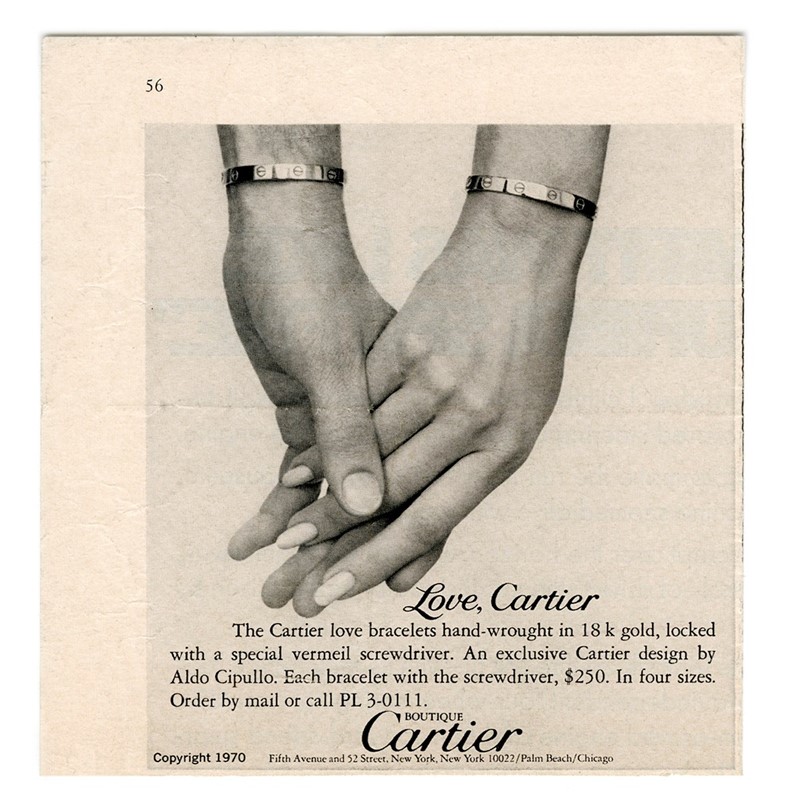Inspired by D.I.Y. objects, Cartier's Juste un Clou collection proves that louche luxury can be found in the everyday
Currently, fashion is being marked by a particular phenomenon: that of looking back to the archives in order to move forwards. There was Demna Gvasalia’s recreation of Cristóbal Balenciaga’s couture on the Balenciaga A/W17 runway; Givenchy’s homage to Riccardo Tisci’s former designs; Kenzo’s new capsule collection of the brand’s 80s classics; Dries Van Noten’s reprisal of his archive prints to celebrate his 100th fashion show; Junya Watanabe’s return to his early flea market inspirations… In an ever-accelerating fashion system, it seems as though the industry might have reached breaking point, and its creatives are making a determined retreat away from the constant demand for the new.


While as a jewellery house, Cartier sits in a somewhat separate realm to the rest (it does not create specifically according to a seasonal fashion calendar), its newest offerings suggest a similar nostalgia for years gone by: it has recently announced it will be reviving the classic Panthère de Cartier watch of the 80s, and their newest launch is an evolution of the designs originally created by Studio 54 native Aldo Cipullo, in the 70s. Originally relaunched in 2012, having been off the market for over 20 years, Juste un Clou is a collection of jewellery which mirrors the form of bent nails: a “radical appropriation of a utilitarian object,” the house states, which “magnify the precious qualities of everyday objects in a sublime take on the ordinary”. It is a collection which bears parity to the Love collection, also designed by Cipullo during his tenure at the maison, which incorporated bracelets that needed to be screwed on to the wrist (with the accompanying Cartier screwdriver): one which sounds disanalogous to the delicate techniques employed by the house, yet somehow suits it just perfectly.

The newest addition to the Juste un Clou range is a thick torque, formed from yellow, pink, or white gold (or, for the most fabulous of wearers, paved with diamonds), which sits surprisingly delicately around the neck, alongside a series of Ecrou bangles which feature tiny little bolts screwed around a white gold bracelet. What is particularly impressive here, and testament to Cartier’s ability to elevate the ordinary into something exceptional, is that such a design – rooted in a subversive punk aesthetic rather than the refinement commonly expected of such a maison – seems an evolution of the house’s core codes rather than a break away from them, and is executed with the same, exacting finesse one would expect. During a time where insouciant Studio 54 glamour is finding its way onto the runways of Gucci, Saint Laurent and Versace alike, it seems that Cartier has (I’m so sorry) hit the nail on the head.
“We are curious about beauty, wherever it lies,” explains Pierre Rainero, director of image and heritage at the brand. “Raymond Loewy once said that good design is the idea of applying beauty to something functional; on our side we think that, in functional objects, there is beauty.” So, in lieu of presenting the new pieces in one of the traditional opulent settings more instinctively familiar to jewellery houses, it asked provocative visual artist Desi Santiago to create a golden garage – complete with mechanical ephemera, shimmering oil spills and overalled assistants – to present their wares as part of Milan design festival Salone del Mobile.
“We are always curious, always adding new elements to things. To me, that is what makes something Cartier” – Pierre Rainero
“That mix of casualness and sophistication is very 70s, very New York,” continued Rainero. “There is a certain coolness in Cipullo’s designs and, while it is not the period itself that has inspired us, we had the feeling that it had become relevant again.” He seems completely right; there is something distinctly and determinedly modern about these new pieces, which root Cartier’s glittering heritage firmly in the here and now – and, perhaps most importantly, broaden its appeal to a new generation. “At Cartier, style is a living language,” Rainero says. “The grammar is our notion of equilibrium, shape and balance – but our vocabulary comes from many different worlds. We are always curious, always adding new elements to things. To me, that is what makes something Cartier.”
